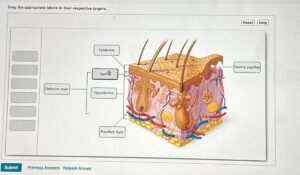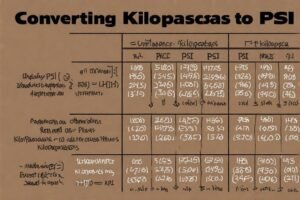
Comprehensive Guide to Converting Kilopascals to PSI
Pressure is a fascinating force that surrounds us, from the air in our tires to the water in our pipes. Understanding how to convert between units like kilopascals a psi is essential for students, engineers, and anyone curious about how the world works. Whether you’re checking tire pressure or studying physics, knowing how to switch between kilopascals (kPa) and pounds per square inch (psi) can make life easier. This article dives deep into the conversion process, offering clear explanations, practical examples, and tips to help you master this skill. With a focus on simplicity and clarity, we’ll break down the science behind pressure units and show you why kilopascals a psi matters in everyday life and science. Get ready to explore a topic that’s both practical and exciting, with insights that will stick with you
Why Convert Kilopascals to PSI?
Converting kilopascals a psi is critical because specific nations and industries use one of a kind gadgets. For example, car tire pressure in Europe might be listed in kPa, but in the U.S., it’s usually in psi. IF you’re visiting or running on an worldwide assignment, knowledge this conversion ensures accuracy.Scientists and engineers also need kilopascals a psi conversions for experiments or designing machines, like hydraulic systems. Even in daily life, like checking the pressure in a bike tire or a scuba tank, knowing how to switch between these units avoids mistakes. This conversion bridges the gap between metric and imperial systems, making it easier to communicate and work globally. It’s a practical skill that saves time and prevents errors.
The Conversion Formula
The key to changing kilopascals a psi is a easy formulation: multiply the strain in kilopascals by zero.1450377 to get psi. For example, if you have 100 kPa, multiply 100 by 0.1450377 to get approximately 14.5 psi. To go from psi to kPa, divide the psi value by 0.1450377 or multiply by 6.894757. This conversion factor comes from the relationship between pascals and psi, where 1 psi equals about 6,895 pascals. The formula is straightforward, but using a calculator ensures precision. Whether you’re a student solving physics problems or a mechanic checking tire pressure, mastering this formula makes kilopascals a psi conversions quick and easy. Always double-check your math to avoid small errors
Step-by-Step Conversion Process
Let’s break down how to convert kilopascals a psi with a clear example. Suppose you have a tire with a pressure of 200 kPa. Step one: write down the formula, psi = kPa × 0.1450377. Step two: plug in the value, so 200 × 0.1450377 = 29.00754 psi. Step three: round to a practical number, like 29 psi, since most gauges don’t need extreme precision. If you’re converting psi to kPa, reverse it: take a psi value, say 30 psi, and multiply by 6.894757 (or divide by 0.1450377) to get about 206.84 kPa. Practice with different numbers to get comfortable. This process is simple enough for school students to follow and ensures accurate results every time.
Real-World Applications
The conversion of kilopascals a psi pops up in many places. IN the automobile world, tire stress is frequently given in kPa in metric nations and psi within the U.S. For instance, a typical car tire might be 220 kPa, which is about 31.9 psi. In weather forecasting, meteorologists in Canada use kPa for air pressure, while U.S. forecasters might use psi or inches of mercury. Scuba divers check tank pressure in psi, but equipment manuals might list kPa. Engineers designing bridges or hydraulic systems also switch between kilopascals a psi to ensure safety and compatibility. Understanding this conversion helps you in practical tasks and makes science more relatable, whether you’re inflating a tire or studying atmospheric pressure.
History of Pressure Units
The units in kilopascals a psi have interesting origins. The pascal, named after Blaise Pascal, was adopted in 1971 as the SI unit for pressure, with kilopascals being 1,000 pascals for convenience. Pascal’s work on fluid mechanics laid the foundation for modern pressure measurements. Meanwhile, psi comes from the imperial system, rooted in England’s avoirdupois system from the 1300s, standardized in 1959. The U.S. stuck with psi because switching to metric would be costly for industries like manufacturing. Knowing this history helps explain why kilopascals a psi conversions are needed today. It’s a clash of old and new measurement systems, with each unit serving specific regions and industries.
Tools for Easy Conversion
Converting kilopascals a psi doesn’t always require manual math. Online calculators, like those on unitconverters.net or omnicalculator.com, let you input a kPa value and instantly get psi. Mobile apps for unit conversion are also handy for quick checks on the go. For students, a scientific calculator works fine—just multiply by 0.1450377. Some tire gauges even display both kPa and psi, saving you the trouble. These tools are great for double-checking your work or when you’re in a hurry. However, understanding the formula behind kilopascals a psi is still valuable for learning and accuracy, especially in school or professional settings where precision matters.
Common Mistakes to Avoid
When converting kilopascals a psi, small mistakes can lead to big problems. One common mistakes is using the wrong conversion thing—blending up zero.1450377 (kPa to psi) with 6.894757 (psi to kPa).Another mistake is forgetting to round results appropriately; for example, 29.00754 psi can usually be rounded to 29 psi for practical use. Not checking units can also cause confusion—always confirm whether the input is kPa or psi. Students might rush and skip steps, so take your time to write out the formula and double-check calculations. By being careful, you’ll ensure your kilopascals a psi conversions are accurate, whether for homework or real-world tasks like checking tire pressure.
Comparing Kilopascals and PSI
Both kilopascals and psi degree pressure, however they’re used differently. Kilopascals, part of the metric system, are standard in most countries for scientific and everyday uses, like weather reports or tire pressure in Europe. PSI, tied to the imperial system, is common within the U.S. for things like car tires, air compressors, and scuba tanks. One psi is about 6,895 pascals, so it’s a larger unit than a kilopascal (1,000 pascals). Converting kilopascals a psi helps bridge these systems. For example, 100 kPa is only about 14.5 psi, showing how psi values are smaller numerically. Understanding these differences makes it easier to work across regions and industries.
Tips for Students
For students tackling kilopascals a psi conversions, practice is key. Start with simple numbers, like 50 kPa, and multiply by 0.1450377 to get about 7.25 psi. Write down each step to avoid mistakes. Use real-life examples, like converting the pressure of a soccer ball (around 60 kPa) to psi (about 8.7 psi). Online tools can help check your answers, but try solving manually to build confidence. Memorize the conversion thing (0.1450377 for kPa to psi) or keep it accessible.If you’re studying physics, relate kilopascals a psi to concepts like force and area to deepen your understanding. With regular practice, this conversion will become second nature, helping you ace tests and practical applications.
1. What is the easiest way to convert kilopascals a psi?
THe simplest way is to multiply the kPa fee with the aid of 0.1450377.For example, 150 kPa × 0.1450377 = 21.755655 psi, or about 21.8 psi. YOu can also use online calculators for instant consequences.
2. Why is kilopascals a psi conversion important?
This conversion is important due to the fact exclusive nations and industries use kPa or psi.For instance, tire pressure in the U.S. uses psi, while Europe uses kPa. Accurate conversions ensure safety and compatibility.
4. What are common uses of kilopascals a psi in daily life?
You’ll see kPa and psi in tire pressure, weather reports, scuba diving, and hydraulic systems. Converting kilopascals a psi allows whilst journeying or running with worldwide gadget.
5. How do I keep away from errors while changing kilopascals a psi?
Always use the correct conversion factor (0.1450377 for kPa to psi), double-check your math, and confirm the input unit. Rounding sensibly and writing down steps also helps.
Conclusion
Mastering the conversion of kilopascals a psi is a valuable skill for students, professionals, and anyone curious about pressure. By understanding the formula (kPa × 0.1450377 = psi), practicing with real-world examples, and using tools wisely, you can confidently switch between these units. Whether it’s for checking tire pressure, studying physics, or working on engineering projects, this knowledge connects the metric and imperial worlds. Avoid common mistakes, practice regularly, and use the history and applications of kilopascals a psi to appreciate its importance. With this guide, you’re equipped to handle pressure conversions like a pro, making science and daily tasks simpler and more approachable. Keep exploring, and let pressure units never stress you out





